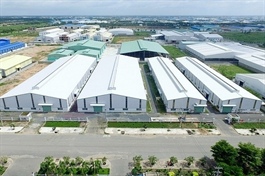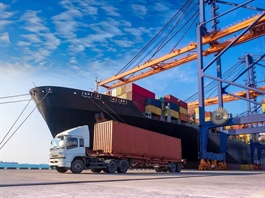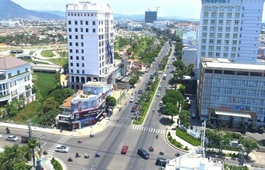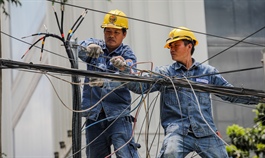Key export goods rumble on despite pandemic strains
Key export goods rumble on despite pandemic strains
Processing and manufacturing involving items such as electronics and rice is one of the main factors driving Vietnam’s all-time high trade surplus of $20.1 billion so far this year.

Many Vietnamese export categories were only dealt a glancing blow by the pandemic, photo Le Toan
|
The impact of the ongoing pandemic has been noted as particularly acute for Vietnam’s export-reliant economy. Aside from computers and machinery, most of Vietnam’s top products registered lower exports compared to the same period last year. However, figures indicate that Vietnamese goods are still in demand.
As a hub for manufacturing, Vietnam has reached $254.6 billion of export turnover, up 5.3 per cent on-year in the first 11 months of 2020 thanks in part to Samsung’s new products and other key export staples like phones and their spare parts, according to the latest report from the Ministry of Industry and Trade (MoIT).
In terms of commodity structure, Vietnam recorded an increase in the exports of heavy industrial goods and mineral goods or light industry and handicraft products over the same period. In this, electronic products, computers, and components fetched an estimated $40.2 billion, up 24.3 per cent on-year. Meanwhile, other key traditional export products saw a decline including garments, footwear, and seafood, which were down 10.5, 9.8, and nearly 1 per cent, respectively.
For instance, Doosan Heavy Industry Vietnam based in the central province of Quang Ngai has exported over 2,000 tonnes of desalination equipment to Bahrain despite pandemic restrictions. The completion of such orders in this context has been considered a great success for Doosan Vina, which is also contributing to increasing the export turnover of Quang Ngai this year.
“At present, we have both stepped up to battle the pandemic and implemented solutions to boost our production and export – these are our two urgent missions,” said Kim Kibum, director of Doosan Vina’s Strategy Division. “We have to increase manpower to fulfil 29 domestic and overseas projects with a total of nearly 50,000 tonnes this year. In addition to the existing shop floors, we have expanded our workshop areas and packing to meet the company’s production needs.”
The success is also demonstrating the high competence and technical skills in the group’s Vietnamese employees. To date, made-in-Vietnam products by Doosan Vina have been present in 35 countries around the world, according to the group.
In the first 11 months of 2020, the export turnover of the textile and garment industry is estimated to reach more than $26.7 billion, down 10.5 per cent on-year. Vu Duc Giang, chairman of the Vietnam Textile and Apparel Association, explained that in light of the pandemic and the world economy declining, the result is remarkable for the textile and garment industry, when the total global textile demand is down 25 per cent.
Deputy Minister of Industry and Trade Do Thang Hai said, “With the pandemic still causing complications, world trade and investment activities have declined, importing countries are increasingly tightening non-tariff barriers, and there has been an increase in domestic protectionism. Vietnam continues to maintain record positive export growth and record trade surplus, showing its effectiveness in directing, operating, and exploiting, making good use of opportunities to boost exports.”
So far in 2020, Vietnam boasted 31 export items earning more than $1 billion each, accounting for 92 per cent of total exports, and six with over $10 billion. Particularly, rice has been a bright spot after maintaining remarkable growth in value over the past 11 months thanks to quality improvements, with an export turnover of nearly $2.64 billion, up 13 per cent on-year.
The MoIT has assessed that, with market advantages and rising global rice demand since the outbreak of COVID-19, domestic enterprises are having an opportunity to highlight Vietnamese rice brands to the global rice supply.
Vietnamese rice production and export enterprises are increasingly professional, making key investments to improve quality for export to the world. For example, Vietnam Rice Co., Ltd. under Vinaseed has had its food safety management system and processing, packaging, and shipping operations certified by Bureau Veritas – the United Kingdom’s leading independent certification organisation.
In general, the United States was the biggest importer of Vietnam goods, purchasing goods worth $69.9 billion, followed by China, the EU, ASEAN, South Korea, and Japan.
In the first 11 months of this year, the country’s imports posted $234.5 billion, increased by 1.5 per cent on-year.
























